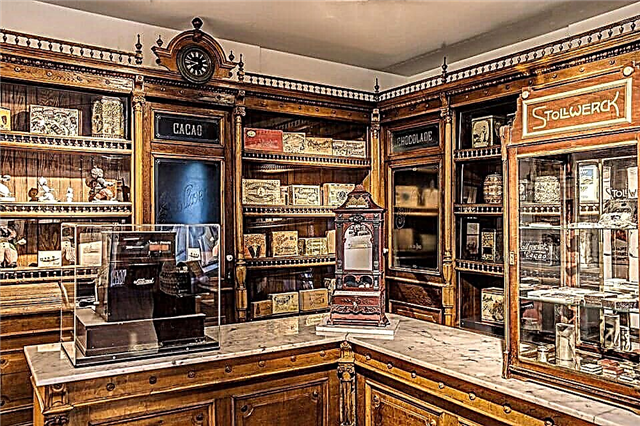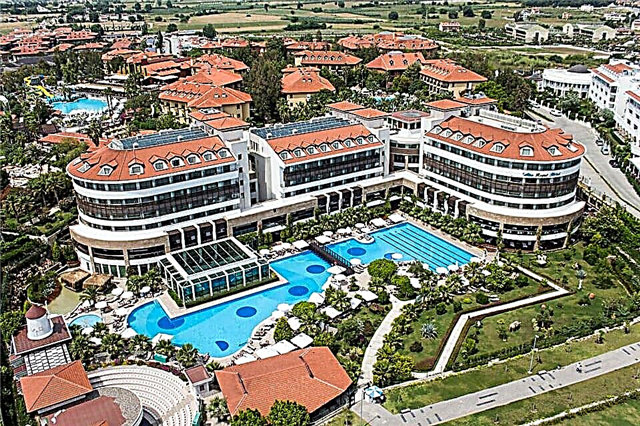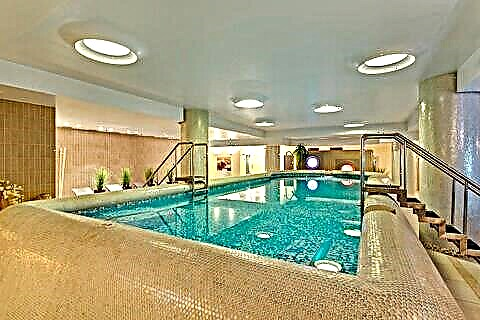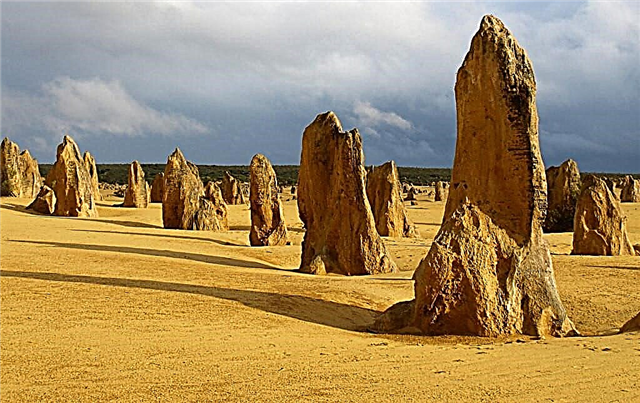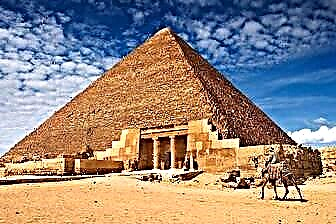Egypt has been one of the most popular beach destinations for decades. Tourists from all over the world come here to relax on the picturesque shores of the Red and Mediterranean Seas. The season at the well-known resorts of Hurghada, Taba, Sharm el-Sheikh, Dahab lasts all year round. Egyptian hotels offer an all-inclusive vacation that is most convenient for travelers.
Egypt is attractive to all types of tourists. Sunbathers will find here comfortable beaches with good infrastructure, those wishing to dive with scuba diving will be able to see the incredible beauty of the Red Sea (one of the best diving spots in the world), those interested in history will be able to visit the monuments of one of the most ancient civilizations.
The best time to travel to Egypt is between April and the first half of November. During the winter months the winds blow and the sea remains cold, although it is sunny and warm enough during the day. Many tour operators offer New Year's tours with a varied festive program.

Popular hotels at affordable prices.
from 500 rubles / day
What to see in Egypt?
The most interesting and beautiful places, photos and a short description.
Pyramids of Egypt
The majestic buildings of antiquity, which are about 5000 years old. The tombs of the powerful pharaohs, keeping a large number of secrets still not revealed. A lot of speculation exists around the pyramids. Some researchers are of the opinion that they were built by a non-human race or aliens.

The Pyramid of Cheops
The largest of the pyramids, the tomb of Pharaoh Khufu (Cheops) and his dynasty. The structure was built for over 20 years and was completed by 2260 BC. The height of the structure is 146.5 m. It consists of 2.3 million rectangular stone blocks. The Great Pyramid is the centerpiece of the Giza complex.

Great Sphinx
The statue of a giant lion with a human face is 73 meters long and 21 meters high. The inside of the statue is hollow. Such structures were used for executions and sacrifices, which is why the Egyptians call the Great Sphinx "the king / father of horror." He also symbolized retribution and catastrophe, which, according to ancient beliefs, should come from heaven.

Egyptian Museum in Cairo
A large museum containing a huge number of rare exhibits. It will take a visitor several days to see everything. Here is the famous treasury of Tutankhamun, which occupies 8 rooms. It was found in 1922, almost not looted. The oldest manuscripts of the museum are more than 5000 years old.

Karnak temple
The main sanctuary of ancient Egypt during the New Kingdom (XVI-XI centuries BC) Once the temple was a residence, treasury and administrative center of the capital city of Thebes. It is located 500 km. from Cairo near Luxor. The well-preserved buildings of the temple complex attract many tourists.

Luxor temple
One of the greatest creations of the ancient Egyptian civilization, where the central place is given to the supreme god Amon-Ra. It features monumental architecture, graceful bas-reliefs, tall columns and majestic statues of the gods. The construction of the temple began during the heyday and power of the New Kingdom under Amenhotep III.

Suez canal
A man-made sea route connecting Africa and Eurasia. It was opened for shipping in 1869. The length of the canal is 161 km. It originates in the city of Port Said in the Mediterranean Sea and ends in the Suez on the Red Sea. In honor of the opening of this waterway, the brilliant Italian composer Verdi wrote the opera Aida.

Aswan hydroelectric complex (dam)
A huge 110-meter dam on the river. Neal, an engineering marvel. It is more than 3 km wide and 800 m thick. It was erected according to the design of the Soviet engineer N. Malyshev. The hydroelectric complex was conceived with the aim of eliminating the consequences of floods in the 60-70s. XX century, as well as to provide the country with electricity.

Valley of the Kings
Burial place of many Egyptian pharaohs and nobles near Luxor. The tombs were equipped with cunning traps for the purpose of protection, and the entrances to them were masked to hide the treasures from the eyes of robbers. The most famous tomb belongs to Thutmose III, who laid the foundation for burials in this place.

Temples in Abu Simbel
Located on the shores of Lake Nasser in the depths of the Nubian Desert. They are giant statues carved into the rock of the gods, Pharaoh Ramses II and his wife Nefertari. The buildings were erected in honor of the ruler's victory over the Hittites. In the middle of the XX century. the temples were moved to a higher place due to the construction of the Aswan hydroelectric power station.

Temples of Philae Island
According to ancient Egyptian beliefs on about. The god Osiris is buried in the middle of the Nile. There is a temple of the goddess Isis (wife of Osiris) and the goddess Hathor. These are the only buildings of this type from the Ptolemaic dynasty that have survived to this day. The island has been under the protection of UNESCO since the 80s of the XX century.

Colossi of Memnon
They are 20-meter stone statues - the remains of the temple of Amenhotep III. The building itself has not survived. In ancient times, these columns guarded the entrance to the sanctuary. For 3.5 thousand years, the colossi have undergone significant destruction, only the outlines of the figures have come down to us. In the XX century. after the construction of the dam, the flooding of the Nile stopped and there was a chance to preserve the statues.

Monastery of St. Catherine
Located on the Sinai Peninsula, it is considered the stronghold and center of Orthodoxy in the Arab East. The monastery was built under the Roman emperor Justinian. In the 1st century. AD was used as a fortress to protect against raids of nomads. In the X century. a mosque appeared on the territory, which made it possible to avoid the destruction of the temple with the arrival of Islam in these lands.

Fortress Kite Bay
A medieval architectural monument in the city of Alexandria, built on the site where the Pharos lighthouse stood in antiquity. The fortress served as a defense against the fleet of the rapidly growing Ottoman Empire, but the Turks still managed to take it. For more than 500 years, the fort served for its intended purpose and was used as a strategic facility.

Montazah Palace and Park
Located in the second largest Egyptian city of Alexandria. The park complex is located on the shore of a small cozy bay. Here at the beginning of the XX century. the royal palace-residence of King Farouk was built. It is a great holiday destination with picturesque beaches, Mediterranean pines and date palms.

Library Alexandrina
A modern building erected on the alleged site of the ancient destroyed Alexandria Library. The complex includes several museums dedicated to the historical and cultural heritage of Egypt, and a cinema. The huge reading room of the library can accommodate over 2,000 people.

Nile river
One of the largest waterways in Africa, stretching for almost 7000 km. It was the Nile that gave impetus to the development of the ancient Egyptian civilization, its fertile valleys among lifeless stones allowed people to grow crops, come up with cunning irrigation systems and move engineering.

Colored Canyon
A gorge in the Sinai Mountains, formed millions of years ago due to a strong earthquake. Then there was a monstrous break in the earth's crust and a canyon of red sand with numerous intricately intertwining inserts of purple, burgundy, white, green and yellow colors appeared.

Blue hole in Dahab
This is the name of a round underwater dip near the Dahab resort. The depth of the hole is more than 130 meters, at a distance of 50 meters from the surface there is a tunnel that connects to the Red Sea.Due to the unique beauty of the coral reef, this site attracts many divers.

Tiran Island
An island in the Red Sea, located between Egypt and Saudi Arabia, which formally owns this territory. But the Egyptian authorities have rented the island and take tourists there, as there is a real paradise for spearfishing there for exploring. The island is practically uninhabited, so its unique nature has remained untouched to this day.

White desert
National Park, located in the north of the Farafra oasis. Once upon a time millions of years ago there was the bottom of the ocean, and since then there have been whimsical white karst formations, which are now of interest to researchers and tourists. A permit is required to enter the national park, but it is easy enough to get it.

Ras Mohammed National Park
The oldest Egyptian nature reserve, combining a piece of the coast and the waters of the Red Sea. It is known for having the most beautiful and rich in marine life coral reef. The park is also home to foxes, hyenas, white storks and gazelles. The remains of a 1941 British ship rest at the bottom.

Mount Sinai
A sacred mountain for all Christians, where, according to beliefs, God appeared to Moses and gave him the Ten Commandments. At the top there is an Orthodox church and a small mosque. This place is popular among pilgrims; special pilgrimage ascents are organized here.

Sharm el-Sheikh resort town
One of the most famous Egyptian resorts, where the emphasis is on youth recreation. There are many bars, restaurants and club hotels here. The infrastructure of the resort is ideally developed - entertainment is offered for every taste and age. Sharm el-Sheikh's beaches are stone, with the exception of Nabq Bay.

Khan el-Khalili market
Traditional colorful Cairo bazaar, located in the historical center of the capital. A wide range of goods can be purchased here, from antique furniture and manuscripts to Bedouin jewelry. The market is small in size, but it is very popular with tourists and collectors of various antiquities.


